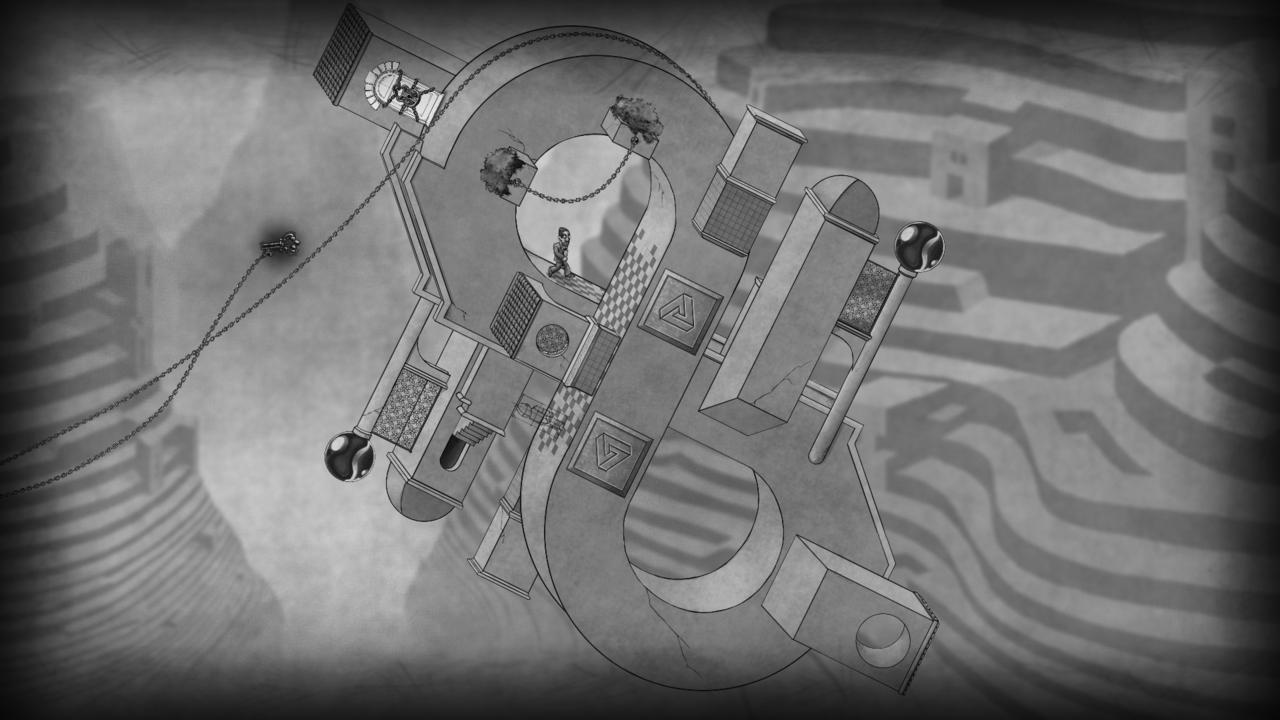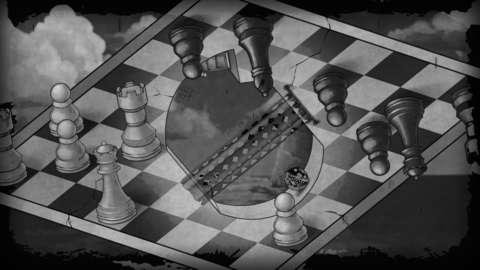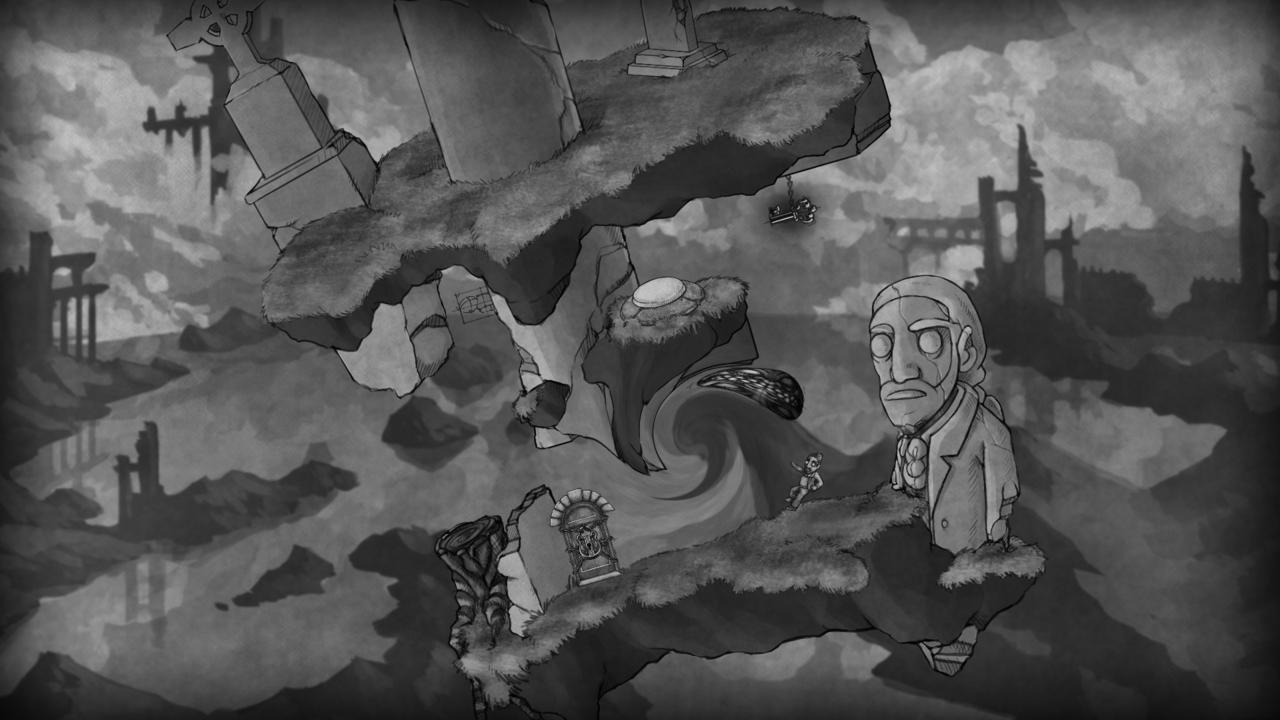M.C. Escher and Isaac Newton were born more than 200 years apart, and as such never worked together (barring any science fiction tomfoolery that I'm unaware of). But if the universe had given them the chance to meet--to sit down under a tree and talk about mathematics, art and philosophy--we can imagine they would have had a lot of interesting things to say to each other. We might also imagine that if the two great minds had collaborated on a puzzle game, it would be something like The Bridge.
A 2D series of brainteasers that wears its Braid influence on its sleeve, The Bridge draws you in quickly with a striking black-and-white visual style that looks as if a pencil drawing has come to life--complete with the smudges of mistakes not fully erased. It's like something out of Escher's sketchbook, drawing on the impossible architecture that made the artist famous.

But while Escher had a clear influence on the aesthetic, the puzzles are more in Newton's domain. The majority of the game is about manipulating physics, rotating the world clockwise or counterclockwise to get your bearded protagonist past obstacles and through a door. You can walk left or right, but you can't jump or otherwise interact with the environment, so twisting the world around you is key to moving around and, well, getting keys.
Because simply getting to the exit would be too easy, The Bridge throws new obstacles at you every step of the way. Sometimes a door will be locked. Simple enough, sure, but sometimes the key to a door will be blocked by a menacing ball that will kill you upon contact. Sometimes a vortex lies in wait, ready to suck you in and not let go if you get too close. Sometimes it's simply the environment itself that stands between you and the goal, twisting and turning in ways that will strain your eyes.

Every level is a single screen in size, allowing you to stare long and hard at a puzzle saying, "Huh. How am I going to get through this one?" The end goal might be simple, like needing to flip the world upside down to reach a door on the ceiling, but The Bridge has many ways to make something simple into something complicated.
The Bridge layers many ideas to keep its challenges fresh, and each new mechanic is introduced in a way that educates you without the need for lengthy tutorials or text boxes. Take, for example, an object that allows you to manipulate the gravity of certain items within a level. Simply twisting the level around will probably be enough to tell you that you're affecting how certain objects behave, but it's the subtle visual cue of a chained plant "falling" toward the sky that clues you in to exactly what you're doing.
If you mess up? Don't worry. By simply holding a button, you can rewind time for a few seconds or back to the beginning of the puzzle if you so choose.
The Bridge layers many ideas to keep its challenges fresh, and each new mechanic is introduced in a way that educates you without the need for lengthy tutorials or text boxes.
Unfortunately, you'll be rewinding more than you'd probably like, as some puzzles rely too much on execution over logic, requiring precise movement and tight timing. These have the potential to be frustrating because you might know exactly what you need to do but have to keep trying, rewinding and trying again to accomplish the task. Or worse, you might try, assume you had the wrong solution because it didn't work the first time, then waste time trying to figure something else out. Are you on the wrong path, or do you need to inch your character just a little more to the left before rotating the world around you? This also leads to a handful of situations where you can use brute force to get your way to the end of a puzzle by pure trial and error, leaving you unsure of exactly what you did to reach the end.
Thankfully, these situations are rare. The Bridge's difficulty increases on a curve that's relatively gentle for the first half before it becomes fiendishly (but satisfyingly) difficult in the second. If you're smart enough, The Bridge will only last you a few hours, with each puzzle taking no more than a few minutes to solve once you know the solution, but it's more likely that you will need to put some serious brain power into the more complex conundrums the game has to offer.

If you played The Bridge when it was originally released back in 2013, there's nothing unique for you in the new console versions. Since the game works well with a controller on a PC, it's no surprise that it adapts well to more living room-friendly systems.
Even a couple years after its release, though, The Bridge is one of the better examples of 2D puzzle games available right now. It's a shame that frustration can sometimes break the trance induced by the wonderful art and design, but that shouldn't keep you from exploring this unique black-and-white world.